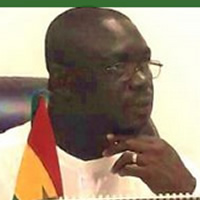According to the 1992 Constitution and other enactments, the District Assembly is the highest Political and Administrative body in the district. It exercises deliberative, legislative and executive functions. The Amansie Central District was established by the Legislative Instrument (L.I) 1774 in 2004. The local government system currently has a three (3) tier structure at the district level, which constitutes the District Assembly, the Town/Area Councils and Unit Committees.
The Assembly is made up of the District Chief Executive, Assembly Members of whom 16 or two-thirds are elected by universal adult suffrage and 7 or one-third are appointed by the President in consultation with chiefs and interest groups in the district. The only Member of Parliament in the area is an Ex-officio member. The Assembly is chaired by the Presiding Member, who is elected from among the members of the Assembly.
The Assembly performs its functions through the Executive Committee and a network of sub-committees. As the Executive committee exercises executive and co-ordinating functions, the sub-committees collate and deliberate on issues pertaining to their functional areas.
The sub-committees are:
Finance & Administration
Justice& Security
Social services & Education
Agriculture & Environment
Works and
Development Planning
Agricultural
For effective administration, the District Chief Executive, who is the political head of the district, is supported by the central administration, headed by the District Co-ordinating Director.
The District Co-ordinating Director is the head of the bureaucracy in the district and is also in charge of all Heads of departments in the district. He reports to the District Chief Executive and is responsible for the day- to-day administration of the Assembly.
The Departments Are:
Education, Youth & Sports
Social Welfare & Community Development
Health
Food & Agriculture
Co-operative/Business Advisory Centre
Works
Finance / Accounts
Physical Planning
Information Service Department
NADMO
Central Administration
Other statutory bodies and in the district include:
National Commission on Civic Education
National Youth Employment Programmes
Information Service
National Electoral Commission
Birth and death registry
National health insurance scheme
Sub District Structures
Town and Area Councils
There is one (1) Town Council and six (6) Area Councils. These are:
1. Jacobu - Town Council
2. Fiankoma - Area Council
3. Hia - Area Council
4. Afoako - Area Council
5. Numereso - Area Council
6. Mile 14 - Area Council
7. Tweapease - Area Council
There are twenty-eight (28) Electoral Areas and twenty-eight (28) Unit committees which constitute the last substructure of the Assembly. The Town Council and Six Area Councils are functional. Five of them have permanent office accommodation whilst two of them use rented offices. The Assembly makes provision in its budget annually to cater for the salaries of the seven Town/Area Council secretaries from its Internally Generated Fund.
Traditional Authority
The District is under Bekwai and Adakragya Paramouncies. Therefore, Bekwaimanhene and Adakra gyamanhene are the two overlords, traditionally, in the District. The two, however pay homage to the Ashantehene, the King of Ashanti Kingdom. The traditional authorities serve as a link between the community and the government, that is, the District Assembly, concerning issues about the welfare of their people. Also, periodic fora are held with Traditional Authorities to create avenue for the traditional authorities, Assembly members, Heads of Department and the District Assembly to come together to deliberate on issues pertaining to the development of the district, issues relating to land acquisition, especially, allocation of lands for community projects like community library, schools, KVIPs and others.
Accountability
All the resources of the Assembly belong to the people, hence accountable to them. This is done through public fora, posting of financial statements on notice boards among other reports.
Participation of Citizenry
The citizens generally participate in public fora, budgetary process, communal labour and watch dog committees among others.
Ghana Strengthening Accountability Mechanism Project through Care International assists the assembly by creating fora where Assembly officials and Community members discuss projects which are of interest to both parties.
Date Created : 10/16/2018 8:15:34 AM





 facebook
facebook twitter
twitter Youtube
Youtube TOLL FREE 0800 430 430
TOLL FREE 0800 430 430 +233 593 831 280
+233 593 831 280 GPS: GE-231-4383
GPS: GE-231-4383 info@ghanadistricts.com
info@ghanadistricts.com Box GP1044, Accra, Ghana
Box GP1044, Accra, Ghana